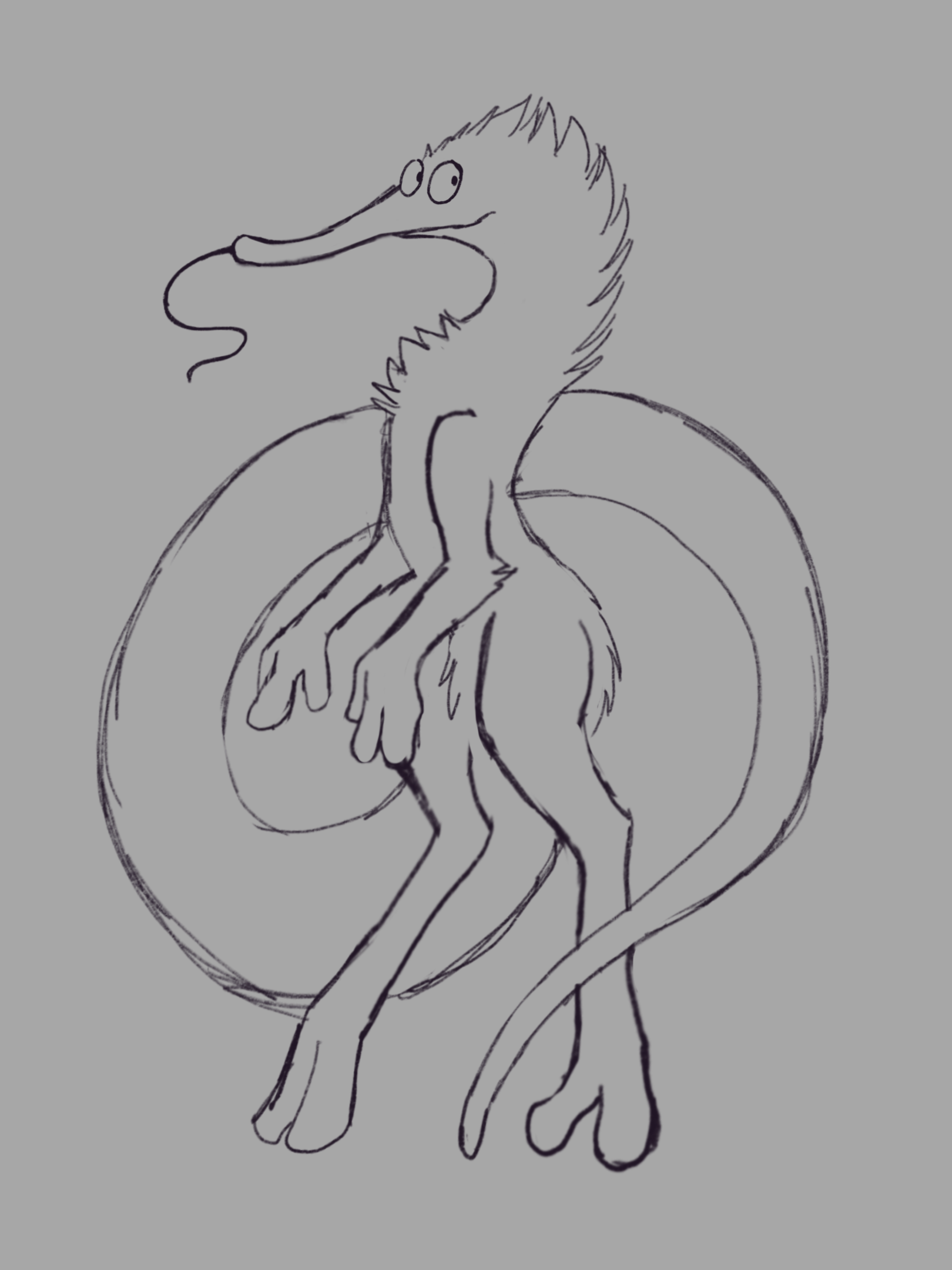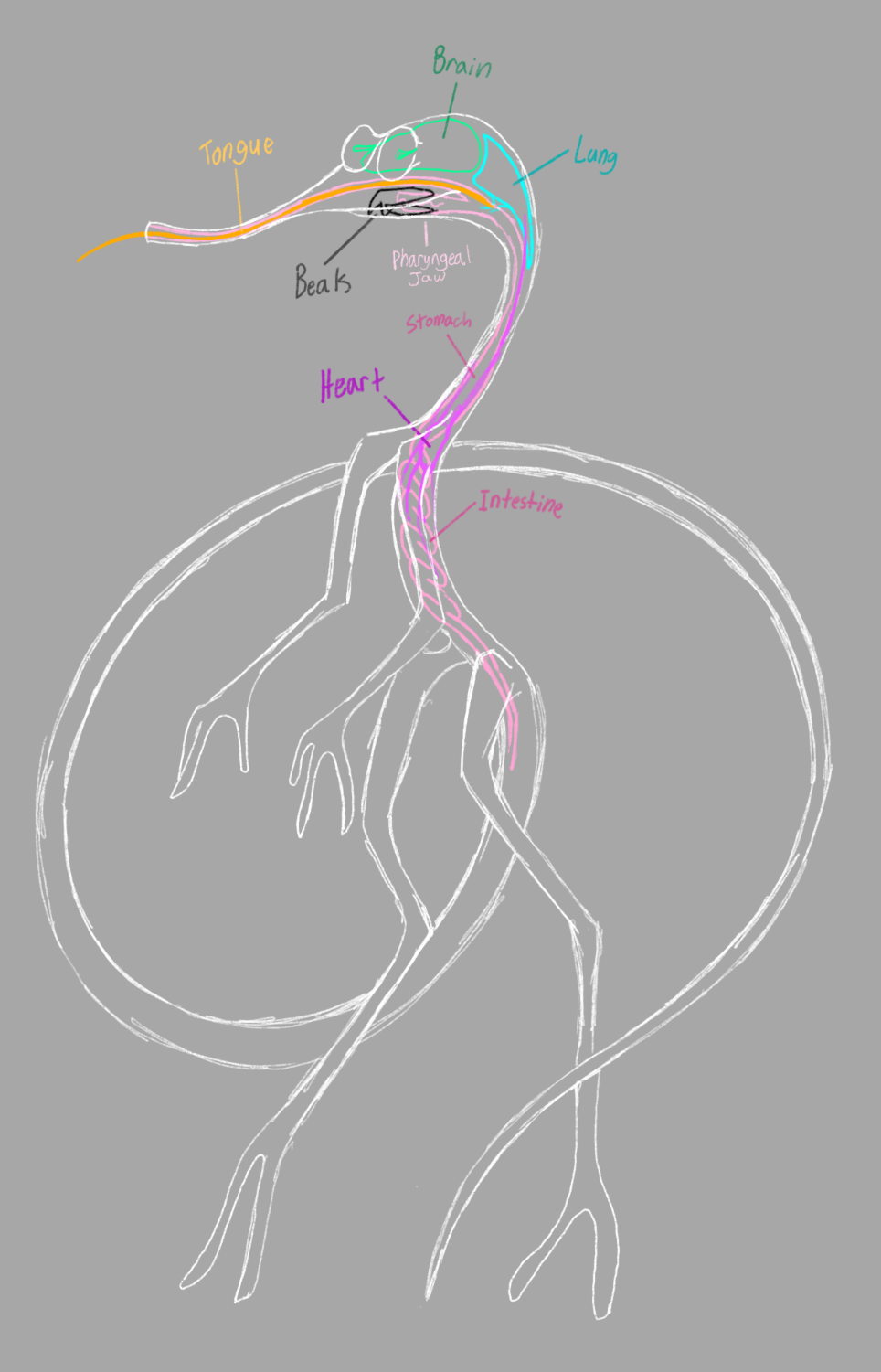Whistleworm Anatomy

Basic illustration of a standard whistleworm (to be replaced; click to enlarge)
- Scientific Name: Ambulavermis nasumtibia; “flute-nosed walking worm”
- Diet: Omnivorous
- Closest Classification: Cephalopod
- Avg. Height: Approx. 12 feet from trunk to tailtip
- Lifespan: 40-50 years
Internal Structure

Rough sketch of a whistleworm's anatomy, as well as how their bodies look beneath their fur. (outdated, to be replaced)
Beneath their thick fur coat, whistleworms are practically as thin as their earth counterparts. Their bodies are composed of tightly woven muscle fibers, providing structure when necessary and granting them an impressive range of flexibility. Rather than bones, they possess thin, cartilaginous cores in their limbs, giving them enough structure to stand, as well as hard, almost metallic beaks tucked inside their heads. Most of their organs are located in their cranium, which is the largest part of their bodies.
Body Systems & Senses

Detail sketch of a whistleworm's eye dome and pupil.
Markings & Coloration

The three main subtypes of whistleworm, with every possible color variation of each.